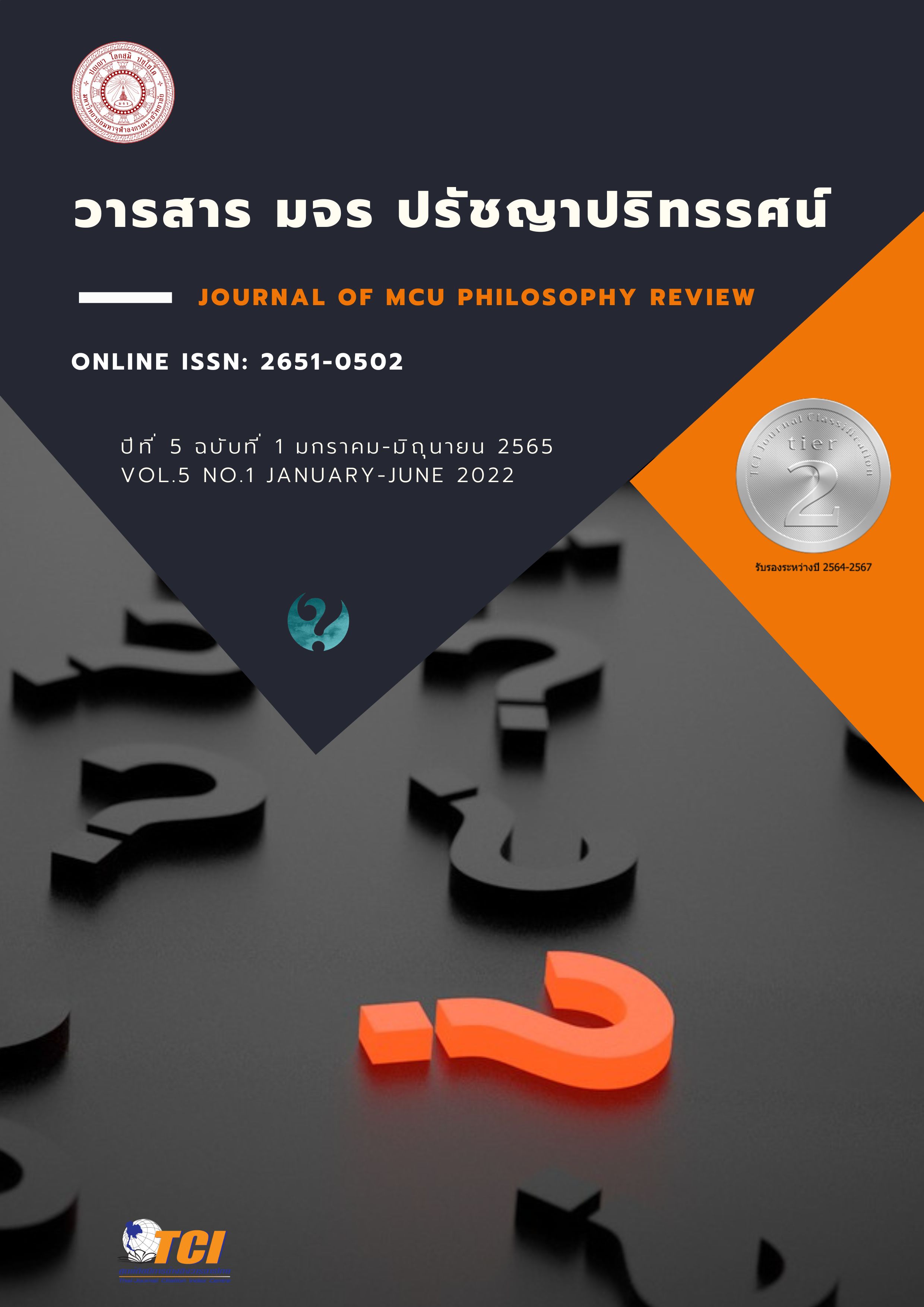Sexual Ethics in Buddhist Philosophical Perspective
Main Article Content
Abstract
From the study of sex in the viewpoint of Buddhist philosophy, it was found that there are two meanings, namely, a physical sex literally embracing a male, female, Paṇḍaka (eunuch) and Ubhatobayañjanaka (hermaphrodite), and a psychological meaning that refers to sexually expressive behavior to indicate shackles or other sexuality. Both of the above meanings in Buddhist philosophy are considered as fictitious definitions of sex. At the level of absolute truth, the definition of sex has been reduced to a five-aggregate truth explanation in which all genders are universally true. As far as the study of sexual ethical problems are concerned, this article clearly found that the definition of sex in the framework of a hypothesis is a condition. This has caused controversy over sexual ethics in Buddhist philosophy on two levels, the individual and the social, whereby most of scholars today come to view such sex in a negative way resulting in precipitating the unbearable bias between males, females and sexual diversity groups whereupon the moral and ethical action in Buddhism turn out to be problematic. In the article of sexual ethical problems, an author proposed the two levels of Buddhist ethical attitudes to be the social ethical norms: 1) individual level; Buddhism takes the attitudes of LGBTQ+ people into a critical account and thereby endorsing their ways of life to be morally trained where a good and noble life can be perfectly actualized, and 2) social level; Buddhism is of the neutral attitude towards sex where judgment of good and bad is taken because of its moral tenet possessing what is named Kammavãdĩ and such a principle prevails over the infringement of life and property own by LGBTQ+ people, be they male, female, or LGBTQ+. Therefore, by virtue of the mentioned attitudes, it argued against those who use fictitious definitions while dealing with the sexual ethical judgments.
Article Details

This work is licensed under a Creative Commons Attribution-NonCommercial-NoDerivatives 4.0 International License.
บทความที่ได้รับการตีพิมพ์เป็นลิขสิทธิ์ของวารสาร มจร ปรัชญาปริทรรศน์
ข้อความในบทความที่ได้รับการตีพิมพ์ในวารสาร ถือเป็นความรับผิดชอบของผู้เขียนบทความ และข้อคิดเห็นนั้นไม่ถือว่าเป็นทัศนะและความรับผิดชอบของกองบรรณาธิการวารสาร มจร ปรัชญาปริทรรศน์
References
ปรีชา ช้างขวัญยืน. (2559). สตรีในคัมภีร์ตะวันออก. พิมพ์ครั้งที่ 3.กรุงเทพฯ: คณะอักษรศาสตร์ จุฬาลงกรณ์มหาวิทยาลัย.
พระพรหมคุณาภรณ์ (ป.อ.ปยุตฺโต). (2555). ตอบ ดร. มาร์ติน: ดลถิ่นอริยชน สตรีหลุดพ้น ขึ้นเหนือมหาพรหม. กรุงเทพฯ: สำนักพิมพ์ผลิธรรม.
พระมหาสมเจต สมจารี (หลวงกัน), (2559). บัณเฑาะก์กับการบรรลุธรรมขั้นสูงในพุทธศาสนาเถรวาท. ศึกษาศาสตร์ มมร, 4 (2), 151-165.
พระมหาอดุลย์ ยโสธโร (บุตรตะเคียน). (2549). การศึกษาเชิงวิเคราะห์เรื่องบัณเฑาะก์กับการบรรลุธรรม. วิทยานิพนธ์พุทธศาสตรมหาบัณฑิต สาขาวิชาพระพุทธศาสนา. มหาวิทยาลัยมหาจุฬาลงกรณราชวิทยาลัย.
พระมหาวิสูตร วิสุทฺธิปัญฺโญ. (2554). การศึกษาเชิงวิเคราะห์เรื่องบัณเฑาะก์ในคัมภีร์พระพุทธศาสนา. วิทยานิพนธ์ศาสนาสตรมหาบัณฑิต สาขาวิชาพุทธศาสน์ศึกษา. มหาวิทยาลัยมหามกุฏราชวิทยาลัย.
มหาจุฬาลงกรณราชวิทยาลัย. (2539). พระไตรปิฎกภาษาไทย ฉบับมหาจุฬาลงกรณราชวิทยาลัย.กรุงเทพมหานคร: โรงพิมพ์มหาจุฬาลงกรณราชวิทยาลัย.
มหาวิทยาลัยมหามกุฏราชวิทยาลัย. (2547). มิลินทปัญหา. พิมพ์ครั้งที่ 3. ศาลายา: มหาวิทยาลัยมหา มกุฏราชวิทยาลัย.
สมภาร พรมทา (2559). พุทธปรัชญาในอภิธรรม. กรุงเทพฯ: ปัญญฉัตร์ บุ๊คส์ บายดิ้ง.
Simone de Beauvoir. (2011). The Second Sex. translated by Constance Borde and Sheila Malovany-Chevallier. New York: Vintage Books.
Tina Chanter. (2006). Gender: key concepts in philosophy. New York: Continuum.


